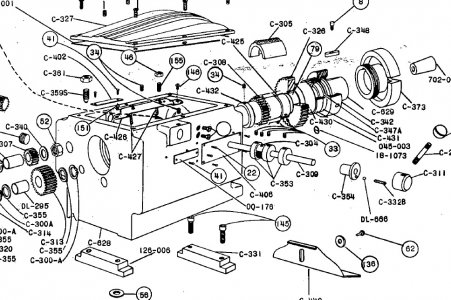I like to add to what has already been said.
I have three lathes that have L-00, L-0, and L-1 spindle tapers. The spindle noses on all of them are all in good shape and accurate. Once in a while, when mounting a chuck, I will encounter some problems getting the chuck to mount correctly. Generally my problem is getting both the spindle taper clean and the chuck back plate taper clean. They both have to be absolutely clean! Runout of the chuck body has never been an issue with any of my chucks I use. But, I do have a heavily worn Buck Adjusta Tru chuck that the jaws are sprung from wear and abuse, not from me, but from previous owners of the lathe. That chuck if used will cut tapers on any piece of barstock put in it. I replaced it with a newer set tru chuck that is in much better shape. When making up the nut onto the chuck adapter, it should make up solid, once hand tight is encountered and the proper wrench is used to tighten up the nut. If it is "spongy" while making up with the proper wrench, there is trash caught up in the tapers. Back it off, clean again, and try again. Wipe the spindle taper and chuck taper clean with your fingers. Don't rely on compressed air or solvents to remove fines left behind from cleaning. Only your bare clean fingers will you know if it was good and clean.
I very highly doubt that you are having problems with the taper on the spindle or the nut. Especially if they were fine with any other chucks mounted to the spindle before buying a new chuck. You have to remember the spindle and taper are harden and ground. They were checked to a standard before they left the factory, to guarantee the spindle was correct. The spindle nut went through the same process and it is harden, too! The spindle and nut hardly ever see any wear. What I have seen in my past is signs of not properly cleaning the tapers before installing chucks and allowing shavings, crud, etc. get between the tapers and eventually damaging the tapers. You see this much worse on the taper of the chuck adapters than the spindles. Got to remember, the chuck adapters are "soft" in hardness compared to the spindle tapers. This is done for a reason.
I must ask, can you "eye ball" the chuck body and see any wobble? If so, set up an dial indicator and check how much it is. The chuck body should be running within about .0015" or less. IF more than that, pull the chuck from the chuck adapter. Check the runout of the chuck adapter. You may need to take a facing cut to get it running true. But even with a little runout in the chuck or the adapter, this would not show up in the taper that you are indicating is happening when turning the od on a piece of bar stock.
I think you need to leave the chuck and the spindle alone!
Make the test bar that Tony mentioned.
I believe what you will find is your lathe has lots of bed wear that is causing it to cut a tapered OD work piece.
Report back and let us know what you find out.

